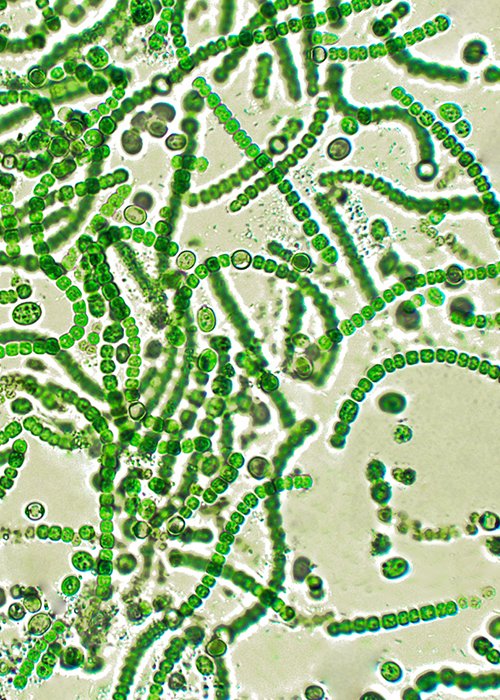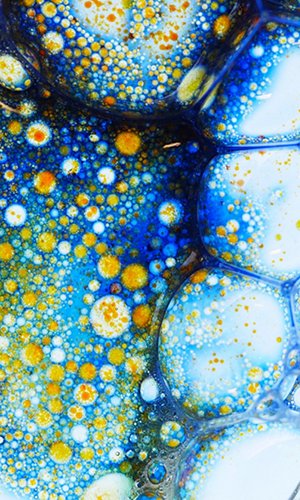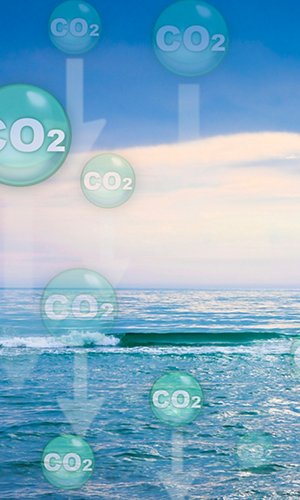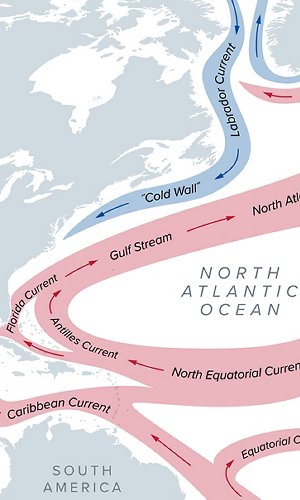Cyanobacteria are ancient photosynthetic unicellular organisms dating back over 3.5 billion years. These microbes revolutionised Earth’s atmosphere through photosynthesis, releasing oxygen and contributing to the Great Oxidation Event (around 2.4 billion years ago). This paved the way for aerobic organisms and the formation of the ozone layer, which protects life from UV radiation. In addition to producing oxygen, cyanobacteria play a vital role in the nitrogen cycle thanks to their ability to fix atmospheric nitrogen and are the ancestors of plant chloroplasts through endosymbiosis. However, under eutrophic conditions, they can multiply rapidly and produce toxins harmful to both the environment and human health.
Chonkus is a newly discovered, unique cyanobacterium found on Italy’s volcanic coasts, and it could become a key resource in tackling climate change. Thriving in CO₂-rich environments, Chonkus efficiently uses carbon dioxide for growth, contributing to atmospheric carbon sequestration. This ability could help reduce the global carbon footprint. One of Chonkus’ distinguishing features is its high cell density, which allows it to sink naturally after growth, eliminating the need for complex technological harvesting methods. This behaviour makes carbon sequestration cheaper and more practical than using floating algae or costlier industrial solutions. Once the cells develop, they settle on the sea floor, locking away carbon long-term and preventing it from returning to the atmosphere. Chonkus also grows rapidly, enabling fast carbon capture. This makes it promising for developing sustainable bioproducts, such as biofuels or biological materials. Its potential applications could not only mitigate climate change but also foster a greener, more circular economy.
In the film “Interstellar”, humanity searches for a "planet B" to colonise, as Earth is becoming uninhabitable. A key element of that quest is terraforming, that is making another planet habitable. Though purely speculative, cyanobacteria like Chonkus could be imagined as a tool for this process. Millions of years ago, cyanobacteria began producing oxygen through photosynthesis, transforming Earth’s atmosphere and enabling complex life. Imagining a distant future, cyanobacteria might theoretically do the same on another planet. Introduced to an oxygen-free world, they could begin generating oxygen, creating conditions for life. Just as they “terraformed” Earth, they could - again, hypothetically - help create a habitable "planet B" for humankind. In a hypothetical future, cyanobacteria could serve as natural agents of terraforming on other planets, just as they did on Earth. Though still a niche subject, research into Chonkus could revolutionise various scientific fields. Exploring its life cycle might provide crucial answers for developing new eco-technologies such as bioenergy production.
Imagine one day cultivating cyanobacteria in bioreactors to produce oxygen or energy in enclosed environments, like space stations, submarines, or even future Mars bases! The name “Chonkus” was chosen by researchers to highlight the importance and uniqueness of this discovery. It’s a playful yet meaningful name, sparking curiosity and encouraging deeper study. The informal tone also reflects the researchers’ excitement about such a promising find. An interesting link can be drawn between Chonkus and Zophobas morio. Zophobas morio, known as “superworms”, are larvae from the Tenebrionidae family that show surprising adaptability. They can feed on and digest polystyrene, a plastic that’s typically very resistant to degradation. This is thanks to gut microbes that break down the plastic, a process that could offer innovative solutions for plastic waste management. Though their contributions differ in scale and context, both Chonkus and superworms positively impact the environment. Cyanobacteria transformed Earth’s atmosphere via photosynthesis, making life possible as we know it today. Superworms, on the other hand, are capable of “digesting” plastic materials that would otherwise persist in the environment, potentially contributing to the reduction of plastic pollution. Ultimately, both are extraordinary examples of evolutionary adaptation that significantly benefit ecosystem health and sustainability, although acting in different ecological settings. Chonkus represents a tiny part of a vast and largely unknown microbial world. Studying this microbe could transform our approach to environmental challenges and open new frontiers in biotechnology. However, it’s important to emphasise that scientific research takes time and resources. To fully harness Chonkus’ potential, continued investment in basic and applied science is essential.
By Riccardo Bisbiglia and Francesco Cartella, 3A Liceo Scientifico Vittorio Veneto, Milan





